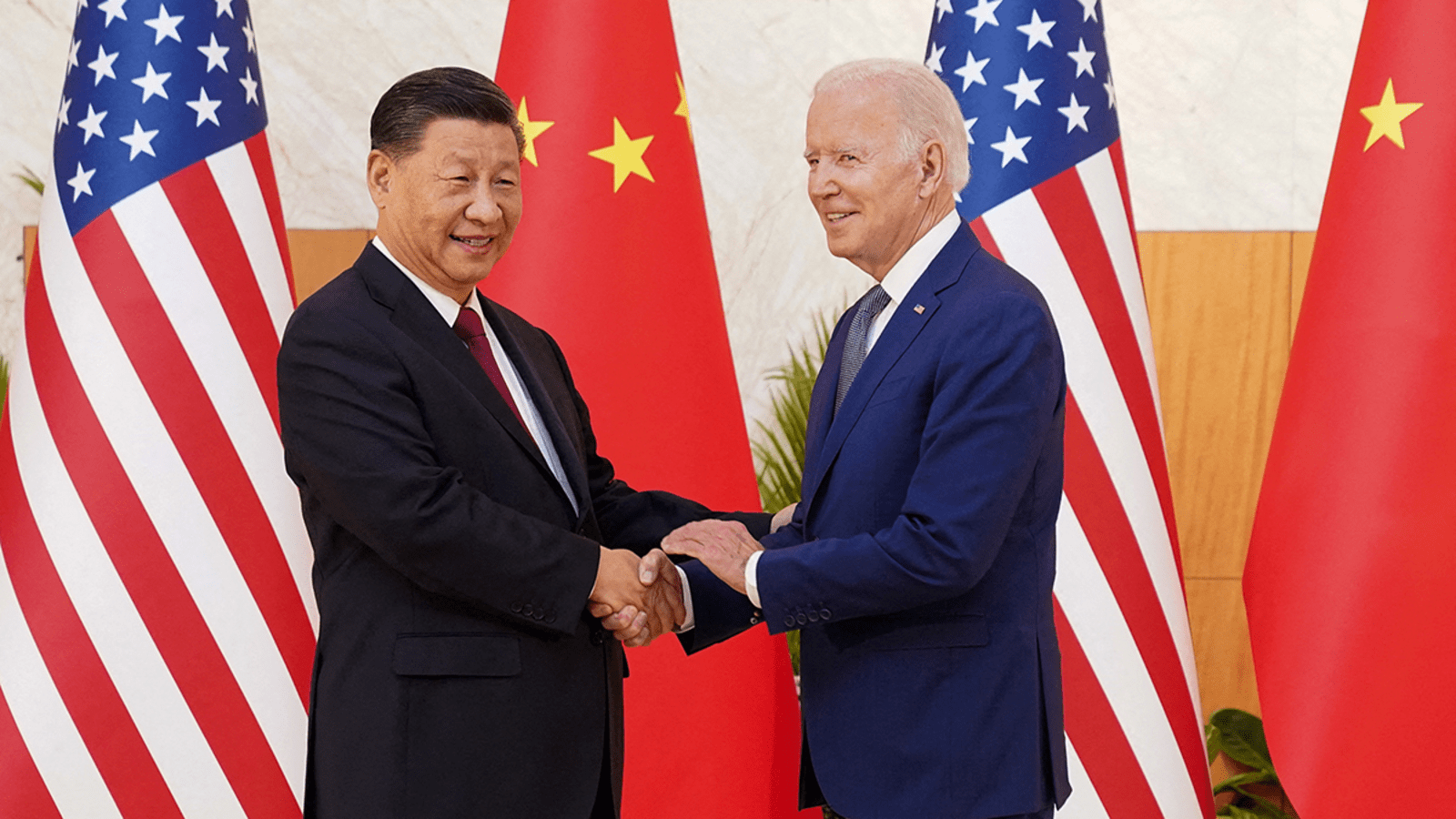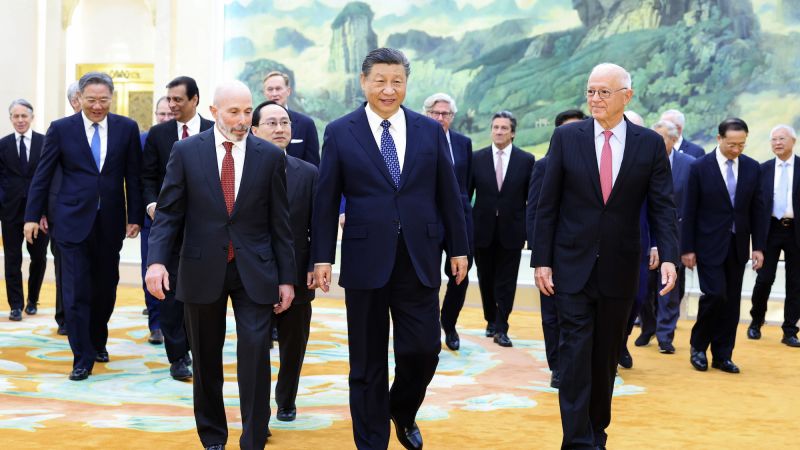Analysis: The Turning Point In US-China Trade Relations

Table of Contents
The Rise of Trade Tensions (2018-2020)
The period between 2018 and 2020 marked a significant escalation in US-China trade tensions, often referred to as a trade war. This period saw a dramatic increase in protectionist measures, impacting various industries and reshaping the global economic order.
Trump Administration Policies and Tariffs
The Trump administration implemented a series of aggressive tariffs targeting Chinese goods, significantly altering the landscape of US-China trade relations. These policies aimed to address perceived unfair trade practices and protect American industries.
- Steel and aluminum tariffs: Broad tariffs imposed on steel and aluminum imports, impacting China among other countries.
- Section 301 tariffs on Chinese goods: Targeted tariffs on a wide range of Chinese products, citing intellectual property theft and other unfair trade practices.
- Retaliatory tariffs from China: China responded with its own tariffs on US goods, leading to a tit-for-tat escalation.
The economic rationale behind these policies was to reduce the US trade deficit with China and protect American jobs. However, the impact on American businesses and consumers was mixed. Soybean farmers, for example, faced significant losses due to Chinese retaliatory tariffs. Consumers also experienced increased prices for various electronics and other goods subject to tariffs. The effectiveness of these tariffs in achieving their stated goals remains a subject of ongoing debate among economists.
Intellectual Property Theft Concerns
Accusations of intellectual property theft and forced technology transfer played a central role in fueling the trade dispute. The US government argued that Chinese companies were systematically stealing American technology and intellectual property, undermining American innovation and competitiveness.
- Examples of specific technologies targeted: This included concerns about theft in areas like semiconductors, telecommunications, and artificial intelligence.
- The role of forced technology transfer in joint ventures: US companies operating in China often faced pressure to transfer their technology to Chinese partners as a condition for market access.
- Impact on US innovation: The loss of intellectual property was seen as a significant threat to US technological leadership and economic growth.
These concerns, while not entirely new, intensified during this period, contributing significantly to the deterioration of US-China trade relations and the escalation of the trade war. The impact was particularly felt by US tech companies operating in or seeking access to the Chinese market.
The Phase One Trade Deal
In January 2020, the US and China signed the Phase One trade deal, marking a temporary de-escalation in the trade war. This agreement included some concessions from China, but its long-term effectiveness remains a point of contention.
- Increased purchases of US agricultural products: China committed to purchasing a significantly larger amount of US agricultural goods.
- Commitments on intellectual property protection: China made commitments to improve its intellectual property protection regime.
- Dispute resolution mechanisms: The deal included mechanisms for resolving future trade disputes.
While the Phase One deal offered a brief reprieve from the escalating tariffs, many analysts argue that it did little to address the underlying structural issues driving the trade conflict. Its success in achieving lasting improvements in US-China trade relations remains debatable.
The Impact of the COVID-19 Pandemic
The COVID-19 pandemic further complicated US-China trade relations, exacerbating existing tensions and introducing new challenges.
Supply Chain Disruptions
The pandemic exposed the vulnerabilities of global supply chains, particularly the over-reliance on China for manufacturing of various goods.
- Disruptions to manufacturing: Factory closures and logistical bottlenecks in China significantly disrupted global supply chains.
- Increased reliance on specific geographic regions for key components: The pandemic highlighted the risks of concentrating manufacturing in a single region.
- The search for diversification: The disruptions spurred efforts by many countries, including the US, to diversify their supply chains and reduce dependence on China.
This disruption highlighted the fragility of globalized manufacturing and led to renewed focus on "reshoring" and "nearshoring" – bringing manufacturing back to the US or relocating it to other countries closer to home.
Increased Geopolitical Tensions
The pandemic also fueled broader geopolitical tensions between the US and China, further complicating trade relations.
- Competition in technology: The rivalry intensified in crucial technological sectors like 5G, artificial intelligence, and semiconductors.
- Accusations of human rights abuses in Xinjiang: Concerns about human rights abuses in Xinjiang further strained relations.
- Concerns about Taiwan: Increasingly assertive actions by China regarding Taiwan added another layer of geopolitical complexity.
These geopolitical issues have made it increasingly difficult to disentangle trade disputes from broader strategic considerations, contributing to a more confrontational relationship between the two countries.
The Biden Administration's Approach
The Biden administration inherited a complex and challenging relationship with China, characterized by deep-seated trade tensions and heightened geopolitical competition.
Focus on Strategic Competition
The Biden administration has adopted a strategy of "strategic competition" with China, which differs from the more confrontational approach of the Trump administration.
- Emphasis on alliances: The Biden administration has focused on strengthening alliances and partnerships to counter China's influence.
- Efforts to strengthen domestic industries: There is a renewed emphasis on investing in and strengthening American industries to enhance competitiveness.
- Targeted actions against specific Chinese practices: The administration has pursued targeted actions against specific Chinese practices deemed unfair or harmful to US interests.
This nuanced approach aims to balance competition with cooperation where possible, recognizing the need to address areas of mutual concern.
Areas of Cooperation and Potential for Future Trade Agreements
Despite the significant challenges, there remain areas where cooperation between the US and China is possible, and there is potential for future trade agreements in specific sectors.
- Climate change: Both countries recognize the urgency of addressing climate change and have engaged in some cooperation on this issue.
- Global health: Collaboration on global health issues, particularly pandemic preparedness, remains a possibility.
- Potential for limited trade deals in specific sectors: There might be opportunities for more targeted trade agreements in specific sectors where mutual benefits exist.
While the prospect of a comprehensive trade agreement similar to past agreements seems unlikely in the near future, limited cooperation and targeted agreements remain a possibility, depending on the evolving geopolitical climate and willingness of both sides to find common ground.
Conclusion
The turning point in US-China trade relations represents a complex interplay of economic, technological, and geopolitical factors. While the initial escalation under the Trump administration exposed deep-seated vulnerabilities and concerns, the Biden administration's approach suggests a shift towards a more nuanced strategy of strategic competition. Understanding this historical juncture and the evolving dynamics is critical for businesses, policymakers, and anyone interested in the future of global trade. Further research into the specific impacts of tariffs, supply chain diversification efforts, and the geopolitical climate will be necessary to fully comprehend the long-term consequences of this turning point in US-China trade relations. Staying informed about evolving US-China trade policies is essential for effective navigation of this dynamic relationship.

Featured Posts
-
 Xong Hoi Dung Cach Thoi Gian Tan Suat Va Nhung Luu Y Quan Trong
May 16, 2025
Xong Hoi Dung Cach Thoi Gian Tan Suat Va Nhung Luu Y Quan Trong
May 16, 2025 -
 Chinas Xi Deploys Top Advisors For Crucial Us Deal
May 16, 2025
Chinas Xi Deploys Top Advisors For Crucial Us Deal
May 16, 2025 -
 Former Nfl Qb Steals Fly Ball From Max Muncy In Japan
May 16, 2025
Former Nfl Qb Steals Fly Ball From Max Muncy In Japan
May 16, 2025 -
 Vavel United States Your Source For Athletic Club De Bilbao News
May 16, 2025
Vavel United States Your Source For Athletic Club De Bilbao News
May 16, 2025 -
 Ontario Government Makes Gas Tax Cut Permanent Eliminates Highway 407 East Tolls
May 16, 2025
Ontario Government Makes Gas Tax Cut Permanent Eliminates Highway 407 East Tolls
May 16, 2025
